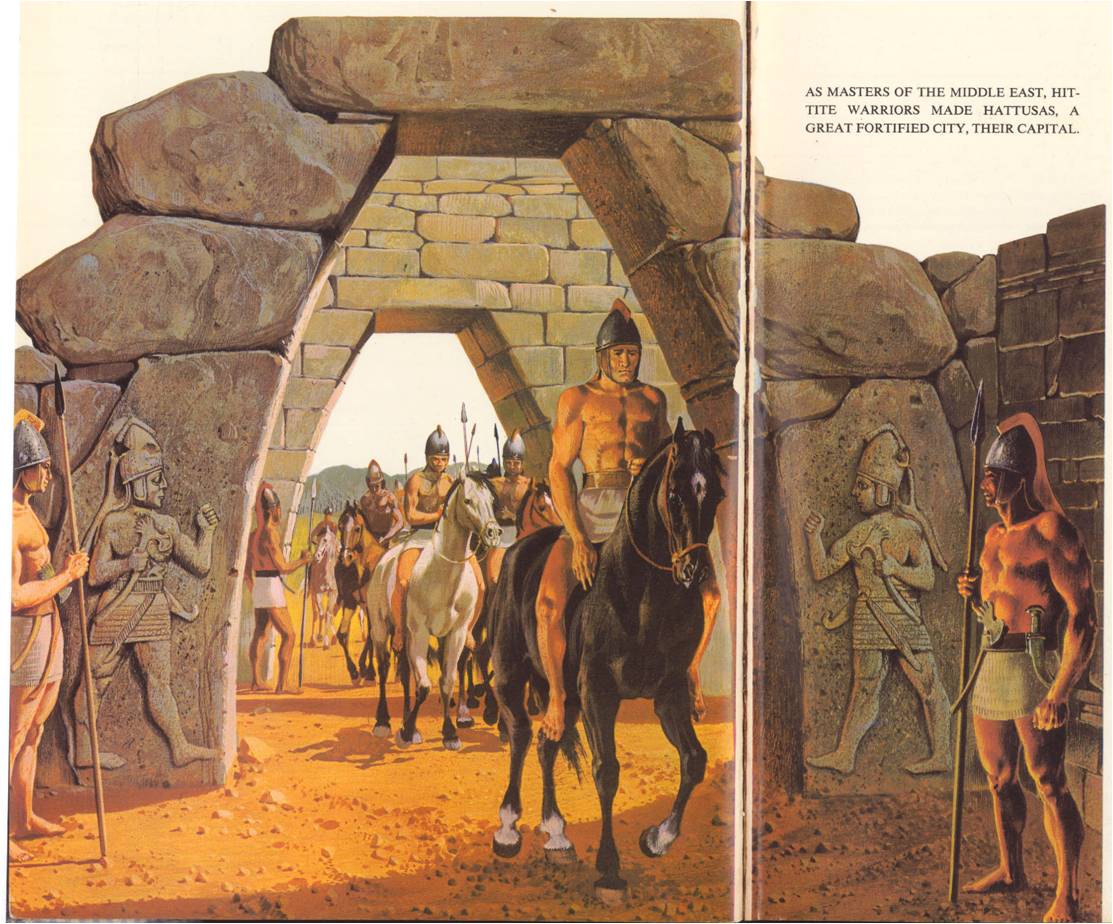During the century after the Hittites had raided Babylon and rose to power in Turkey and Syria, Mesopotamia was a divided unproductive land. In the south, Babylonia fell under the rule of foreigners, first the Kassites from the northeast and then the Elamites from the southeast. Neither of these people seemed able to make any advances in civilization. Northern Mesopotamia came under the Mitanni kingdom, which at least introduced trained horses and chariots to the Near East. By the time the native Babylonians regained control and the Mitanni kingdom fell, another people was disturbing the land – the Assyrians. The Assyrians who wrote and spoke Akkadian, were close relatives of the Babylonians and had played a minor part in Mesopotamian affairs for some time. They made their home in the upper reaches of the Tigris River, where once had been some of the earliest farming communities in the world. The region later came under the influence of various early Sumerian and Babylonian kingdoms to the south. By about 2000 B. C., the Assyrians themselves became independent enough to carry on a thriving trade with people in Turkey. But around 1800 B. C. the Hittites put an end to that and then the Mitanni kingdom set itself over Assyria. The Warrior Kings Centuries passed and the Assyrians overthrew a weakened Mitanni kingdom, but even before this they were struggling with Babylonia for control of Mesopotamia. Year after year, lands, cities, trading routes and outposts changed hands, until the Assyrians gradually won out. By 1100 B. C., under their king Tiglath-Pileser I, the Assyrians were strong enough to begin expanding. Fighting off enemies on all sides, Assyria began to dominate the metal trade with the north and the commercial centres of the Syrian coast. Loot and tribute made Ashur, the capital of …
Read More »Hittite Warriors Build a Kingdom 1750 B. C. – 700 B. C.
Within 150 years of the death of Hammurabi, the cities of Mesopotamia were powerless and other peoples took up the struggle for the Near Eastern world. Among them were the Hittites, who had taken the city of Babylon. The rough Hittite tribesman hardly knew what to do with such a splendid city, let alone with an empire, so they went back to their strongholds in the highland plains of central Turkey. They had been living there for several centuries, ever since they had left their homeland in the steppes of central Asia. When the Hittites first moved into Turkey, they had found a land of peasants and small city-states unable to unite in resistance. The Hittites allowed the people to keep their own gods and languages, recruited officials to manage affairs and left the farmers and craftsmen to their work. It was a bleak, rocky land, hot and dry in summer, cold and windswept in winter but, there were grains and cattle and the people made beer and wine and kept bees for honey. The land was rich in metal ores, too. Later the Hittites were among the first to use iron. The Hittites set themselves over the native peoples as an aristocratic warrior class. For many years, rival Hittite tribes and chieftains fought among themselves before Labarnas established himself as the first true king. He led the Hittites in expanding their power throughout Turkey and his son Hattusilis I, extended it to Syria. Hattusilis made the city of Hattusas his capital. It was strategically located near the crossroads of the main trade routes in central Turkey. As his reign neared its end, Hattusilis could take pride in the kingdom he was leaving to his people, but he had one unpleasant task to perform. He had raised his nephew as …
Read More »Mesopotamia, Where Civilization Began 4000 B.C. – 1750 B.C.
Mesopotamia is where civilization began. By 4000 B. C., many different groups of people were working out their lives in a variety of ways. In a great arc from the eastern coast of the Mediterranean, across the Turkish plains and through the highlands of Iraq and Iran, groups of peoples had settled and were farming, tending animals, making pottery and building towns, markets and forts. In the deserts, mountains and steppes, nomadic tribesmen lived by herding animals and by hunting and raiding. In Mesopotamia as these populations grew, they began to compete for land, food and supplies. One of the areas that was to become most sought after was a stretch of land almost at the very centre of these various peoples. It was only about 150 miles wide and 600 miles long and extended from the foothills of northwester Iraq to the Persian Gulf. Two rivers, the Tigris and the Euphrates, drained the area and gave it its name, Mesopotamia – “the land between the rivers”. For the next 3,500 years, Mesopotamia was to witness the rise and fall of many cities and cultures. Sumerians, Akkadians, Babylonians, Assyrians, Chaldaeans – these were only some of the people who took root and flourished in this land. Finally the Persians came and reduced Mesopotamia to a mere province but from the first unknown settlers to the mighty Nebuchadnezzar, this land gave rise to much that would affect all civilization. The first settlers in Mesopotamia set up their villages and farmed in the upper reaches of the Tigris. These were among the earliest farming communities anywhere in the world, but they gradually declined and it was many years later before this region came to be known as Assyria. Mesopotamia’s southern region, which was later called Babylonia, was especially hot and dry and …
Read More »


